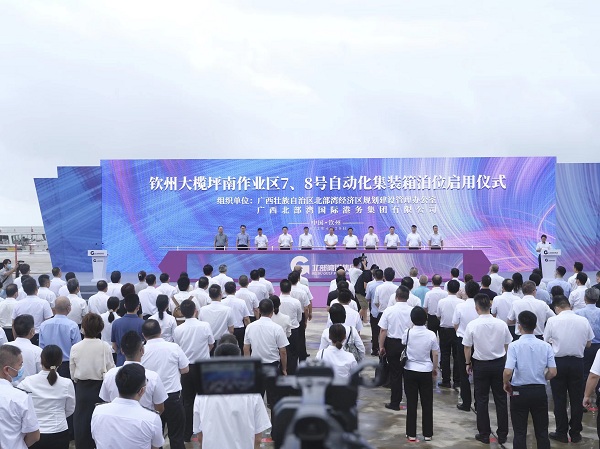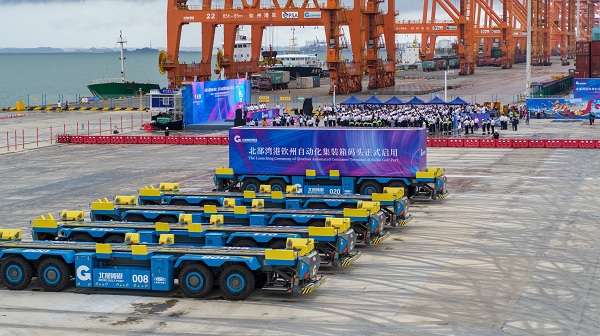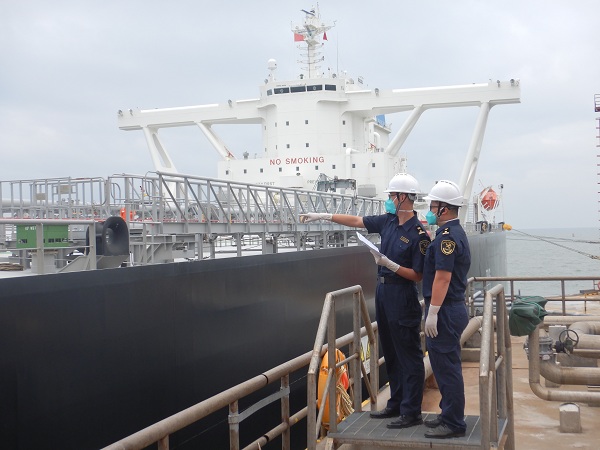Automatic container terminal opens at Qinzhou Port


Launching ceremony of the No 7 and 8 automatic container berths at Qinzhou Port's Dalanping south working area. [Photo provided to chinadaily.com.cn]
The No 7 and 8 automatic container berths at Qinzhou Port's Dalanping south working area were put into operation on June 28, marking the operation of China's first sea-rail intermodal transportation container terminal.
The two 100,000-metric-ton berths were renovated from two 70,000-ton berths and they have a total coastal line of 518.5 meters. Upon operation, the two berths will be able to handle 1.02 million twenty-foot equivalent units (TEU) of containers annually, becoming the world's 15th automatic container wharf.
Two more 200,000-ton berths will be built in the second phase construction, with an estimated annual container handling capacity of 1.6 million TEUs upon operation in 2023.
A globally leading U-style technique was applied in the berth's operation, which can solve problems like high investment, unbalanced usage of equipment, as well as lack of loading and unloading sites.

Advanced IGVs. [Photo provided to chinadaily.com.cn]
Automatic intelligent guided vehicles with technique innovations are used at the terminal, with such kind of IGVs loaded with China's first flexible intelligent charging robots created through independent research and development. These IGVs can operate for four hours with one single charge of 20 minutes.
Chen Junming of the development and management office of the Beibu Gulf Economic Zone in Guangxi Zhuang autonomous region said that the operation of these two berths marks one more step forward in Beibu Gulf's smart port construction.
Zhu Kuirui of Qinzhougang customs said that cargo arriving at Qinzhou Port can go through quick inspection and fast customs clearance, further facilitating economic and trade exchanges between regions alongside the New International Land-Sea Trade Corridor and RCEP member countries.

Customs staff members carry out inspections. [Photo provided to chinadaily.com.cn]
MOST POPULAR
- 1 $39.7 billion worth of deals inked at Airshow China
- 2 China announces tax relief measures to stabilize real estate sector
- 3 A look at China's economy in October, 2024
- 4 Public holiday extension announced
- 5 China's NEV annual production hits 10 million milestone amid global carbon reduction efforts
Editors' Picks
 Infographic:
Golden jubilee of China-Brazil relations
Infographic:
Golden jubilee of China-Brazil relations
 Infographic:
A look at China's economy in October 2024
Infographic:
A look at China's economy in October 2024





